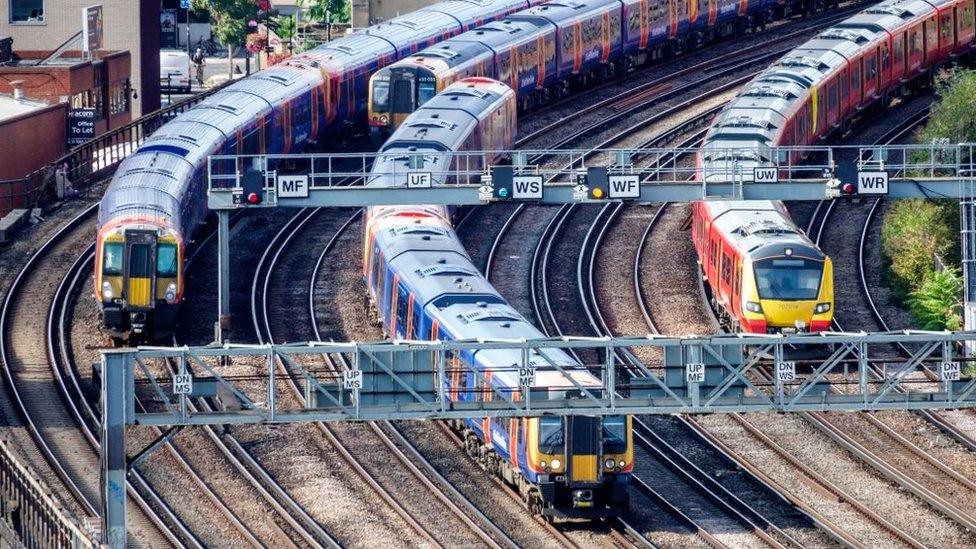When it comes to exploring Europe, train travel is often the most scenic, efficient, and convenient way to get around. Trainline, a popular platform for booking train tickets across Europe, simplifies the entire experience by offering users a seamless way to plan and book their journeys on multiple European rail networks. In this blog, we’ll explore Trainline’s services, key routes, timings, and offer some travel tips to make your European trip hassle-free.
What is Trainline?
Trainline is a platform that connects travelers to train and bus networks across Europe. You can book tickets from various operators in countries like the UK, France, Germany, Spain, Italy, and many more. Whether it’s high-speed services, regional trains, or even buses, Trainline offers a user-friendly interface to compare routes, prices, and departure times.
Key Routes for a European Trip
Europe’s train network is expansive, and with Trainline, you can access some of the most popular routes for an unforgettable European journey:
1. London to Paris
Operator: Eurostar
Duration: Around 2 hours 15 minutes
Highlights: Zip through the Channel Tunnel to explore two iconic cities. This is one of Europe’s most popular international train routes, offering speed and convenience between the UK and France.
2. Paris to Amsterdam
Operator: Thalys
Duration: Around 3 hours 20 minutes
Highlights: Pass through the picturesque countryside of France, Belgium, and the Netherlands. A direct train connects two of Europe’s most vibrant cities.
3. Rome to Florence
Operator: Trenitalia (Frecciarossa)
Duration: 1 hour 30 minutes
Highlights: This high-speed train whisks you through the Italian countryside between two historical and artistic hubs.
4. Berlin to Prague
Operator: Deutsche Bahn
Duration: About 4 hours
Highlights: Travel from Germany’s capital to the heart of the Czech Republic, a journey filled with historic sites and scenic landscapes.
5. Barcelona to Madrid
Operator: Renfe (AVE)
Duration: 2 hours 30 minutes
Highlights: Spain’s high-speed rail connects its two major cities, allowing you to explore both the artistic charm of Barcelona and the cultural richness of Madrid.
6. Zurich to Milan
Operator: Trenitalia/EuroCity
Duration: 3 hours 30 minutes
Highlights: Cross the Alps, enjoying breathtaking views of Switzerland and northern Italy on this scenic route.
Train Timings and Frequencies
Trainline provides real-time schedules and updates for most routes. However, here are some general guidelines for common routes:
High-speed trains like Eurostar, Thalys, and AVE typically run every 30 minutes to 1 hour during peak times.
Regional and intercity trains such as Deutsche Bahn, Trenitalia, or SNCF TGV often have trains departing every 1-2 hours, depending on the destination.
Night trains, such as the ÖBB Nightjet, offer overnight services on key routes like Vienna to Paris or Rome to Munich, departing late in the evening and arriving early in the morning.
For the most accurate timings, always check the Trainline app or website, as schedules may vary depending on the season or public holidays.
Tips for Using Trainline for a European Trip
1. Book Early
Prices for European trains tend to rise as the departure date approaches. Booking tickets a few months in advance can save you a significant amount of money, especially for high-speed routes like the Eurostar or Thalys.
2. Download the App
Trainline’s app makes travel even easier. You can store digital tickets, track live train statuses, and receive notifications about delays or platform changes.
3. Seat Reservations
For many high-speed trains (e.g., Thalys, Eurostar, and Trenitalia), seat reservations are mandatory. Make sure you select your preferred seat when booking. For some regional trains, reservations aren’t required but may be recommended during peak travel seasons.
4. Flexible Tickets
If you’re unsure about your schedule, consider opting for flexible tickets, which allow changes or cancellations. This can be particularly useful for longer trips where plans might change.
5. Check for Rail Passes
If you’re planning multiple journeys across various countries, consider using a Eurail Pass, which Trainline supports. This can provide flexibility and savings, especially if you’re taking many long-distance trains.
Do’s and Don’ts for Train Travel in Europe
Do’s
Arrive Early: Especially for international trains (Eurostar, Thalys), arriving at least 30 minutes before departure is advisable to go through ticket checks or border controls.
Validate Tickets: In countries like Italy and France, don’t forget to validate your ticket at the station (using the small machines) if you have a paper ticket.
Bring Snacks: While many high-speed trains offer onboard catering, bringing your own snacks can save money and ensure you have your favorite treats on long journeys.
Check Train Classes: Many European trains offer multiple classes (Standard, Premium, Business, First Class). The price difference can be minimal for short trips, so check if upgrading to a more comfortable class is worth it.
Don't
Don’t Forget Travel Documents: Always carry your passport or ID, especially for cross-border routes like Eurostar (UK to Europe) or trains between Schengen and non-Schengen countries.
Don’t Assume Wifi: Not all trains in Europe offer wifi, especially regional ones. Download any maps, entertainment, or work material in advance if you expect to need them.
Don’t Overpack: European trains often have limited luggage storage space, especially in crowded compartments. Pack light to avoid difficulties finding space or moving your bags.
Don’t Be Noisy: Respect other passengers by keeping noise to a minimum, especially during longer journeys or overnight routes.
Conclusion
Trainline is your gateway to exploring Europe’s stunning cities and landscapes efficiently and comfortably. From high-speed connections between major capitals to scenic regional routes, the platform makes planning and booking your European trip a breeze. By following these tips and guidelines, you’ll ensure a smooth and memorable journey across the continent.
Happy travels!








.jpg)










0 Comments